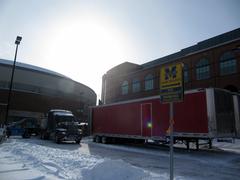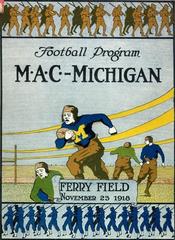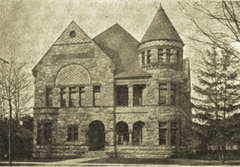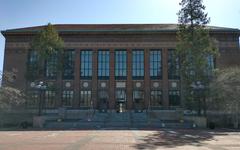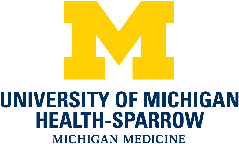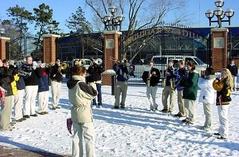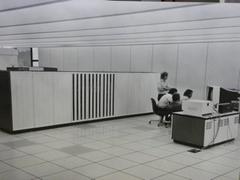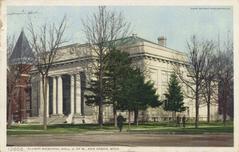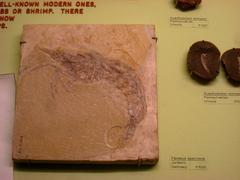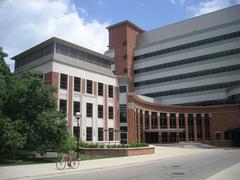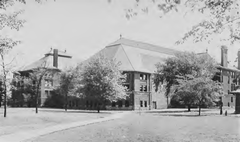
William Palmer Residence Visiting Guide: Ann Arbor Historical Site Tickets & Hours
Date: 03/07/2025
Introduction
Perched atop a tranquil wooded hill in Ann Arbor, Michigan, the William Palmer Residence—often called the Palmer House—is a masterwork of Frank Lloyd Wright’s Usonian architectural ideals. Completed in 1952 for University of Michigan economics professor William B. Palmer and his wife, Mary Wharton Shuford Palmer, this historic home exemplifies mid-century modern design, organic architecture, and a seamless integration with its natural surroundings. As one of Wright’s most acclaimed late-career projects, it is both a privately owned residence and a celebrated Ann Arbor historical site, welcoming visitors through guided tours, special events, and overnight stays by reservation (Michigan Modern; AADL).
This guide explores the Palmer House’s origins, architectural significance, preservation efforts, and practical visitor information—including hours, tickets, travel tips, and nearby attractions—to help you plan a memorable visit to one of Michigan’s architectural treasures.
Table of Contents
- Introduction
- History & Commissioning of the Palmer House
- Architectural Design & Features
- The Palmers’ Legacy and Stewardship
- Visiting Information: Hours, Tickets, Accessibility
- Preservation, Restoration, and Community Engagement
- Travel Tips & Nearby Ann Arbor Attractions
- FAQs
- Visuals & Media
- Summary & Final Tips
- References
History & Commissioning of the Palmer House
The story of the Palmer House traces back to the late 1940s, when William and Mary Palmer acquired a picturesque, sloping property at 227 Orchard Hills Drive, just east of downtown Ann Arbor and adjacent to Nichols Arboretum. The Palmers, deeply engaged in academia and the arts, sought a home that would reflect their values and aspirations. Inspired by Wright’s Affleck House and captivated by his Usonian vision—affordable, well-designed, and harmoniously integrated with nature—they commissioned Wright, who was then in his eighties, to design their residence. Wright’s plans, completed in 1950, resulted in a home unlike any other in Ann Arbor (Michigan Modern; Archeyes).
Architectural Design & Features
The Palmer House is a quintessential example of Wright’s late Usonian style. Its design is based on a geometric module of equilateral triangles and parallelograms, creating a dynamic floor plan with few right angles and three wings radiating from a central core. This motif recurs throughout the house and landscape, lending the structure a sense of organic unity with its wooded surroundings (Frank Lloyd Wright Foundation; Archeyes).
Notable Features
- Materials: The house features Cranbrook brick, tidewater red cypress for walls and ceilings, and a copper and cedar-shingled roof—all chosen to age gracefully and harmonize with nature.
- Windows & Light: Mitred-glass corner windows blur the boundary between indoors and outdoors, framing views of the “stroll garden.”
- Interior Details: The open living area centers on a dramatic fireplace, with radiant-heated concrete floors finished to resemble polished leather. Custom perforated ceramic blocks add structural and decorative interest.
- Geometry: Virtually no right angles exist in the house; triangular geometry flows through the floor plan, built-ins, and even the unique beds and shower.
- Teahouse: A rare teahouse, designed by Wright protégé John H. Howe, stands on the property, enhancing the site’s architectural richness.
The Palmers’ Legacy and Stewardship
William and Mary Palmer’s backgrounds in academia, music, and horticulture shaped both the house and its landscape. They cultivated a lush, native garden that cascades down the ravine, collaborating with friends and drawing on their own research. The Palmers maintained the home in near-original condition for more than five decades, ensuring its preservation as an exemplary model of Wright’s organic architecture (Michigan Modern; Archeyes).
Since 2009, the University of Michigan’s College of Architecture and Urban Planning has managed the house, balancing preservation with public engagement through educational programs, guided tours, and short-term rentals (Michigan Architectural Foundation).
Visiting Information: Hours, Tickets, Accessibility
Address: 227 Orchard Hills Drive, Ann Arbor, MI 48104
Visiting Hours & Tours:
- The Palmer House is open for guided tours and overnight stays by advance reservation only. Tours are typically offered Thursday–Sunday, 10:00 AM–4:00 PM, though schedules may vary for special events and seasons.
- Guided tours last about 60 minutes and provide in-depth insights into the home’s design and history.
- Group sizes are limited to protect the finishes and furnishings.
Tickets & Booking:
- Tour tickets are generally $20 per person, with discounts for students and seniors.
- Overnight stays and special event rentals are available for up to six guests with advance booking; rates vary by date and duration.
- Reservations and ticket purchases should be made through the official Palmer House website.
Accessibility:
- Due to the home’s historic design and hillside setting, some areas have limited accessibility. Wheelchair access is available for main tour areas; contact management ahead of your visit to discuss accommodations (Frank Lloyd Wright Foundation).
- On-site parking is available for guests.
Visitor Guidelines:
- Shoes may need to be removed inside the house.
- Photography is generally permitted for personal use (without flash); commercial photography requires prior approval.
- No pets except service animals; quiet hours are observed to respect neighbors.
- Smoking and open flames are prohibited.
Preservation, Restoration, and Community Engagement
Materials & Restoration:
Preservation efforts prioritize original materials, including cypress wood, Cranbrook brick, and copper roofing. Restoration projects use historically accurate methods, from cypress replacements to mortar repointing, ensuring the house’s character endures (Michigan Architectural Foundation). Built-in furniture and fixtures are carefully maintained, and all alterations require approval from a preservation committee.
Landscape:
The garden is managed to maintain the native ecosystem, with removal of invasives and preservation of original plantings and the winding driveway.
Stewardship & Protection:
Managed by the University of Michigan with support from local organizations, including the Michigan Architectural Foundation and Ann Arbor Historic District Commission, the Palmer House enjoys legal safeguards and public advocacy to ensure its long-term protection.
Educational & Virtual Access:
The University of Michigan offers educational programs and a digital archive with virtual tours and access to architectural drawings and photographs, allowing wider public engagement while minimizing wear on the property.
Travel Tips & Nearby Ann Arbor Attractions
Getting There:
- Drive or use rideshare; public transportation is limited in the immediate area.
- Detroit Metropolitan Wayne County Airport (DTW) is about 25 miles away.
Nearby Attractions:
- Nichols Arboretum: Botanical gardens and hiking trails next door.
- University of Michigan Campus: Museums, galleries, and historic architecture.
- Downtown Ann Arbor: Arts, dining, and shopping.
- Other Sites: University of Michigan Museum of Art, Ann Arbor Hands-On Museum.
Visitor Tips:
- Book tours or stays well in advance, especially during university events or peak seasons.
- Wear comfortable shoes; expect some uneven or sloped terrain.
- Review house rules in advance for a smooth visit.
Frequently Asked Questions (FAQ)
Q: What are the Palmer House visiting hours?
A: Tours are typically available Thursday–Sunday, 10:00 AM–4:00 PM, by advance reservation. Check palmerhouseannarbor.com for current schedules.
Q: How do I purchase tickets?
A: Tickets and overnight stays must be booked in advance via the official website.
Q: Is the house accessible for wheelchairs?
A: Main tour areas are accessible, but some parts may be limited due to historic features; contact management for accommodations.
Q: Can I rent the Palmer House for events or stays?
A: Yes, overnight stays and small events are available by reservation.
Q: Are pets allowed?
A: Only service animals are permitted.
Q: Is photography allowed?
A: Yes, for personal use. Flash and commercial photography require special permission.
Visuals & Media
- Exterior View: The Palmer House’s hexagonal wings and integration with the woods.
- Interior: Natural light filtering through perforated brick and cypress woodwork.
- Map: Location near Nichols Arboretum, University of Michigan, and downtown Ann Arbor.
For digital images and virtual tours, visit the official Palmer House website and the Michigan Architectural Foundation.
Summary & Final Tips
The William Palmer Residence is a crown jewel of Frank Lloyd Wright’s Usonian legacy—an architectural retreat that invites visitors to experience innovation, craftsmanship, and harmony with nature. Plan ahead for tickets or reservations, respect the house’s preservation guidelines, and explore the vibrant Ann Arbor surroundings to enrich your visit. For audio guides and the latest updates, download the Audiala app and follow us on social media. Your visit supports the ongoing stewardship of this remarkable American landmark (Frank Lloyd Wright Foundation; Michigan Architectural Foundation; Palmer House Official Website; Frank Lloyd Wright Sites).
References
- William B. and Mary Shuford Palmer House, Michigan Modern
- William Palmer Residence, Ann Arbor District Library
- The Palmer House by Frank Lloyd Wright, Archeyes
- Palmer House, Frank Lloyd Wright Foundation
- Palmer House, Frank Lloyd Wright Sites
- Visiting the Palmer House in Ann Arbor, Palmer House Official Website
- William & Mary Palmer House, Michigan Architectural Foundation

